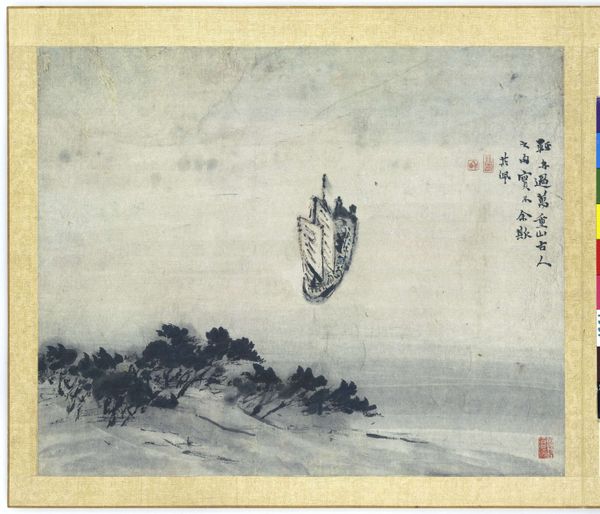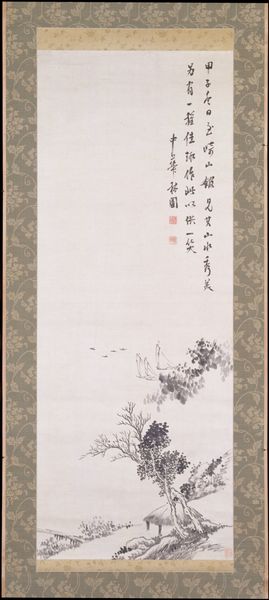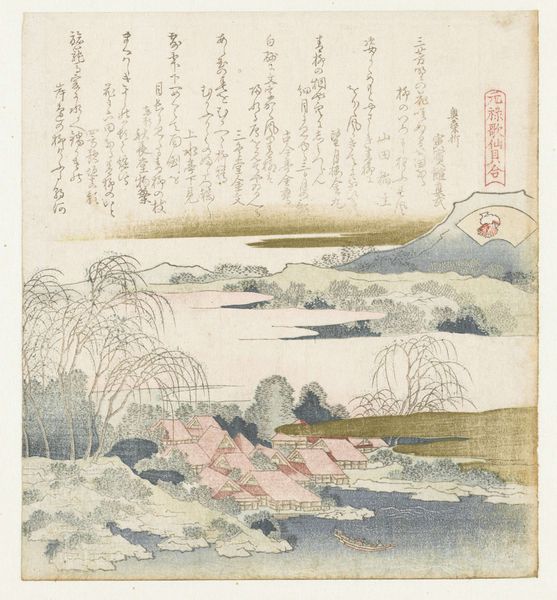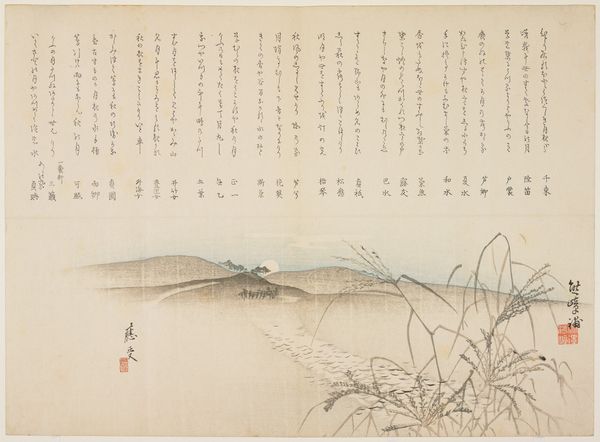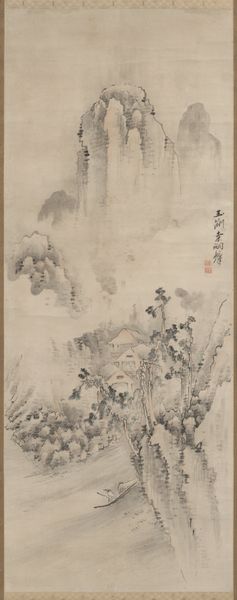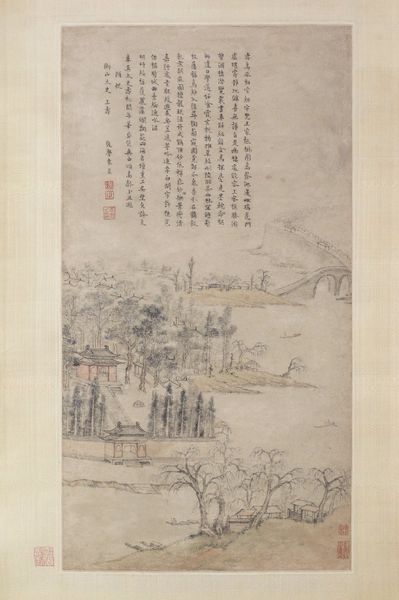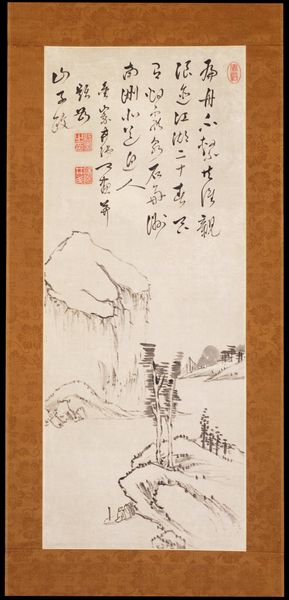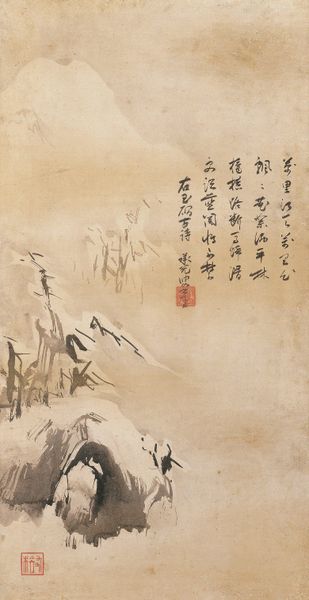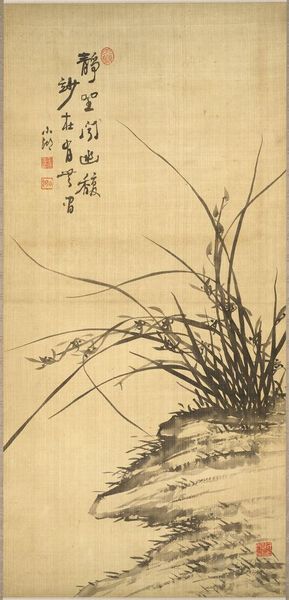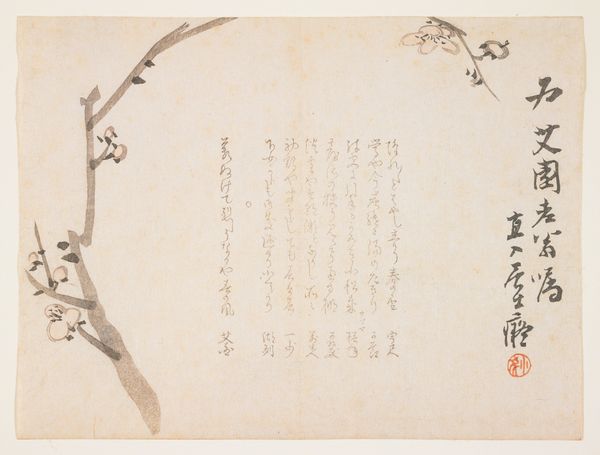
drawing, ink
#
drawing
#
asian-art
#
landscape
#
figuration
#
ink
#
china
Dimensions: Image: 28 7/16 x 14 9/16 in. (72.2 x 37 cm) Overall with mounting: 64 3/4 x 21 in. (164.5 x 53.3 cm) Overall with knobs: 64 3/4 x 23 3/4 in. (164.5 x 60.3 cm)
Copyright: Public Domain
Curator: This drawing, "Drunken Fisherman by a Reed Bank," by Tang Yin, created between 1500 and 1524 using ink on paper, is currently at the Met. I find it has such an incredible sense of calm, almost desolate. What’s your first impression? Editor: It feels incredibly serene but with a hint of melancholy, like a quiet acknowledgement of solitude. How do you interpret this work, especially considering the artist’s life and the social context of the time? Curator: I see it as a potent commentary on the literati's complex relationship with society. Tang Yin experienced significant setbacks in his official career, leading him to express himself through art that often critiqued the existing social order. The drunken fisherman, a recurring figure in Chinese art, can be seen here as embodying a rejection of worldly ambitions, preferring instead the solace of nature. It also serves as social commentary for a growing divide within society that rewarded social status more than authentic hard work. What does the artist’s choice of the fisherman say to you? Editor: That's a really interesting take. It speaks to a form of passive resistance, almost. By depicting the fisherman in this state of inebriation, Tang Yin perhaps hints at the disillusionment felt by those who chose—or were forced—to exist outside the mainstream. He questions those norms of what constitutes a valuable life. I now wonder about the symbolism of the reeds and water. Curator: Exactly. Consider the reeds as representing resilience and adaptability. Even in a seemingly desolate landscape, there's still a form of stubbornness, of silent protest. The vastness of the water suggests a limitless space for escape, but also perhaps, a sense of being adrift. What I'm left pondering is what does this say to the everyday viewer regarding their own experience in late-stage capitalism, where the very system which allows freedom also keeps people entrenched in systemic challenges? Editor: It definitely complicates the initial reading of simple serenity! The artwork speaks volumes about resistance, agency, and our relation to modern-day society and historical circumstances. Thanks!
Comments
No comments
Be the first to comment and join the conversation on the ultimate creative platform.

